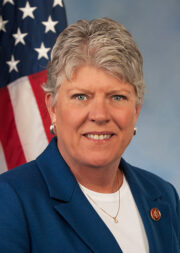Legislators Express Concern
WASHINGTON, DC – Between FY 2017 and FY 2021, VA spending on community care rose from $10.1 billion to $21.8 billion–a 116% increase that does not factor in the costs of administering the program. At the same time, VA spending on healthcare in its own facilities grew 32%.
The increase in community care eligibility created by the MISSION Act was intended to help veterans who had to travel long distances to VA facilities or who were unable to get an appointment at a VA facility in a reasonable amount of time. However, legislators are still hearing from veterans who report that wait times for community care can be just as long as at VA, and have them wondering whether the program is succeeding in its mission.
“My colleagues and I regularly hear from veterans that they are still experiencing significant delays in receiving community care appointments,” Rep. Julia Brownley (D-CA.) told VA officials at a House Veterans Affairs Health Subcommittee hearing last month. “They’re waiting weeks or even months for community care appointments to be scheduled. I can’t even fathom how much higher VA community care expenditures would be if the program were operating efficiently and effectively.”
Brownley also chastised VA leaders for failing to brief Congress on its community care program. In the lead-up to the implementation of the MISSION Act in 2019, VA provided regular updates to the committee. Those ended with the beginning of the pandemic and have yet to restart.
“Now when we request a briefing, it takes weeks or months for them to occur,” Brownley declared. “It’s been five months since our last briefing.”
She found this particularly troubling, since VA is in the midst of a substantial reorganization of its community care activities. The department is realigning the responsibilities of the Office of Community Care, shifting financial functions to VA’s Office of Finance and merging the program operations side with the Office of Veterans Access to Care, which until now has been responsible only for in-house appointments. Upon completion, it will be known as the Office of Integrated Veteran Care.
“VA’s lack of engagement on community care [during] this ongoing reorganization is, to me, unacceptable,” Brownley said.
According to Miguel LaPuz, MD, acting deputy undersecretary for health, the increase in cost can be placed at the feet of the American private healthcare system as a whole.
“[A veteran using community care] is now exposed to the same healthcare delivery system that is out there in the community,” LaPuz explained. “And the VA is tasked to integrate this. This is the greatest task now for the VA. To integrate a complex and complicated healthcare delivery system and to offer the veteran a well-integrated system”
He added, “[As a private citizen] I will go to get a lab; I will go to get an X-ray; I will go to see a specialist. And I as an individual will have to integrate all of that. Now the VA is the one that is doing the integration.”
Some legislators were worried that this meant the MISSION Act had unintentionally increased the difficulty for veterans getting care.
“Are you telling me that we, as the House VA Committee and the Congress accidentally, through our efforts to provide better care in the community for veterans, caused VA to increase the size of the already largest bureaucracy in the United States government?” asked Rep. Jack Bergman (R-MI).
LaPuz assured him this was not the case. Rather, he said, it’s the workload that the existing bureaucracy has been asked to tackle which has grown.
“The bureaucracy has not increased,” he explained. “The task for integrating … has increased. To ensure the medical records are in one particular location. That all of the providers in the community will have access.”
Rocky Start
The pandemic has played a part in the rocky start of the MISSION Act, explained VHA Chief Financial Officer Laura Duke. It also means the funding balance between community care and direct care is still fluctuating.
“We’re still trying to get our arms around the impact of the MISSION Act because of the impact of the pandemic, during which time we saw very different behavior in the direct care system in the community,” she explained. “The veterans who are eligible for community care–they are offered the opportunity to come into the direct care system. And it’s our mission that our budget fully fund however many veterans choose to stay with VA.”
However, some legislators are accusing the department of purposely sabotaging the community care program in an attempt to keep veterans in VA healthcare facilities.
In a letter sent to VA Secretary Denis McDonough last month, nine Republican senators accused the VA of willfully not following the guidance created by the MISSION Act.
“Veterans deserve access to quality health care in a timely manner and the VA’s failure to do so and willful disregard for established standards is unacceptable,” they wrote.
“On a weekly basis, our constituents voice concerns and present evidence that the VA is ignoring these guidelines in an effort to reduce community care, and ultimately deny mandated care to eligible veterans,” the letter states. “In some cases, the VA is rescheduling care without the veteran’s consent. In other cases, the VA is seemingly ignoring the veteran’s best medical interest. Most alarmingly, there are reports of internal VA training materials that are actually pushing to reduce community care while the VA decommissions and closes the Office of Community Care and shuts down the VA Mission Act website. These essential policies and program offices were stood up to prevent the tragedies of the Phoenix Waitlist Scandal and are directly linked to protecting the quality and accessibility of veteran healthcare.”
The senators also noted the lack of regular briefings and requested that McDonough examine the department’s commitment to having a collaborative and transparent relationship with Congress.



